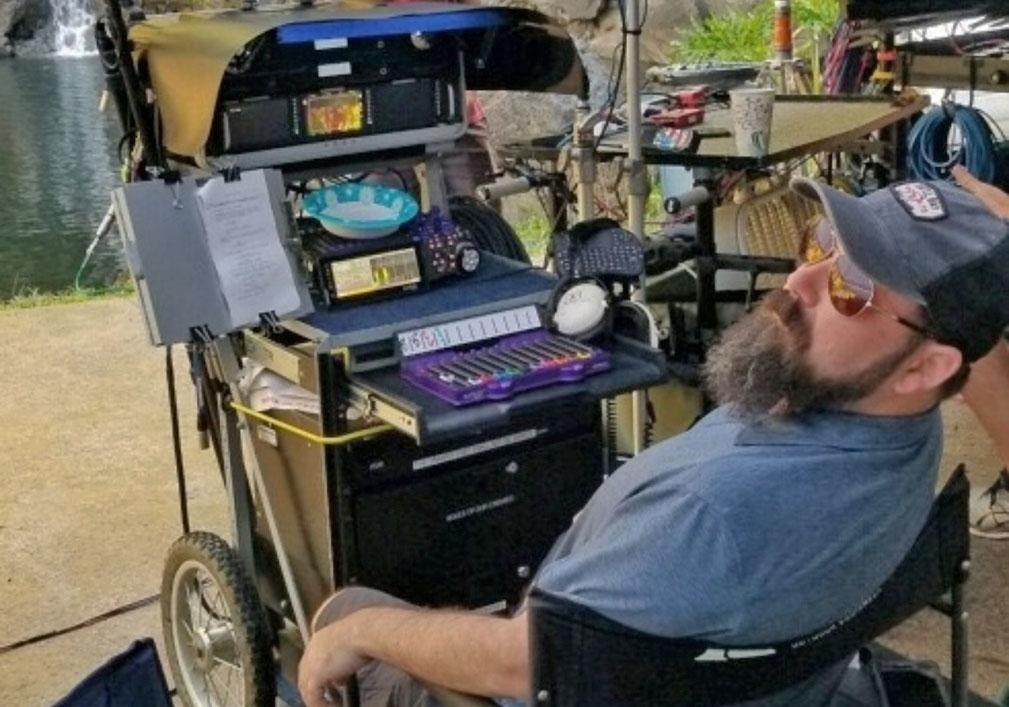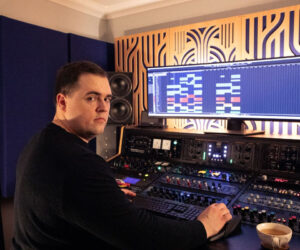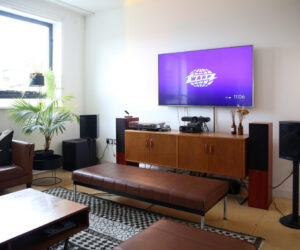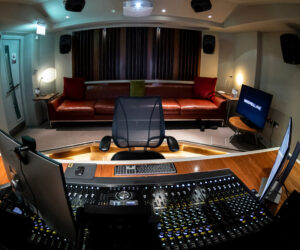Sound mixer Todd Weaver, who’s worked with productions such as Good Girls, Doom Patrol, Stranger Things, and I,Tonya, employed a range of Lectrosonics Digital Hybrid Wireless and all-digital components for his most recent project, The Menu, a film starring Ralph Fiennes.
Specific components in Weaver’s toolkit on this project — as well as numerous other previous projects — included Venue receivers plus SSM micro beltpack, SMV, and SMWB wideband transmitters as well as DSQD receivers and DBSM transmitters. “The biggest challenge we faced on The Menu was that there could be as many 16 to 18 actors all speaking at once,” he explains. “It’s an ensemble cast, with basically four groups of guests and then the chef who’s messing with everyone, so you see all their reactions in succession. The cameras are just raking across everything, especially during the wide shots.”
This dictated frequency coordination needs of a high magnitude, for which Weaver took advantage of Lectrosonics’ integration with the Dante audio-over-Ethernet standard. “We used Wireless Designer to integrate everything and frankly could not have done the movie without it,” he says. “The way it worked was, the DSQDs have Dante built in. My old-school Venues were controlled over our LAN via an Extron RS232-to-Network IP link. We ran audio from the Venues into a Ferrofish analog-to-Dante converter. This way, every single channel on the set was on Dante in the same bucket, and from Wireless Designer I could find frequencies for all the channels. I used all my transmitters.”
All of Weaver’s transmitters weren’t enough, so he brought in Jason Sullivan as a second sound mixer, who brought an additional two racks of SRc receivers. “He mixed another four to six tracks on top of my 12 to 16, as we had that high cast count even out in the field, Weaver notes. “But thanks to Wireless Designer and Dante connectivity, everything was in the same bucket. Jason and I both had Cantar X3 recorders, receiving our individual Dante channels, and I had his mix coming into my recorder on a fader. Again, without Wireless Designer overseeing all this, it wouldn’t have been possible. When we would send our deliverables to post-production, they’d ask me ‘How in the heck did you mix all this?’ They couldn’t believe we did it.”
Several scenes on the water presented a simultaneous need for adequate range. “We shot all the boat scenes on the water, boat-to-boat,” Weaver says. “We had a follow boat and were told the talent boat was only going to get about 20 or 30 feet away. It was more like 200 to 300 feet. Still, I got nice, clear signal on everything.
“A big reason that I recommend Lectro as a brand as compared to something else is, you can always call up someone there who knows what they’re doing,” he concludes. “Everyone is accessible, right on up to executive management. And, since it’s a smaller company that doesn’t make a bunch of other products, they’re focused on wireless. That means they’re focused on wireless customers like me.”




















